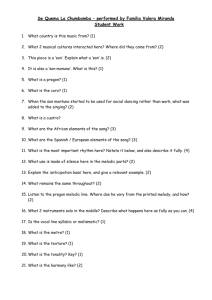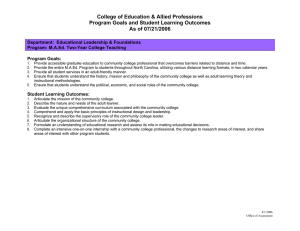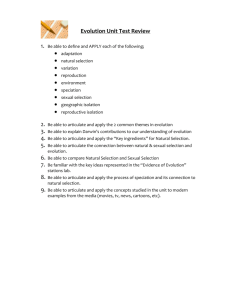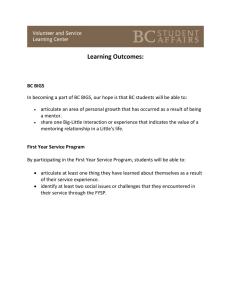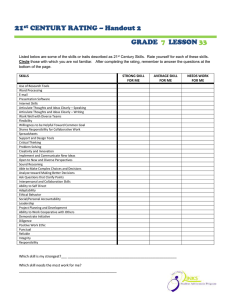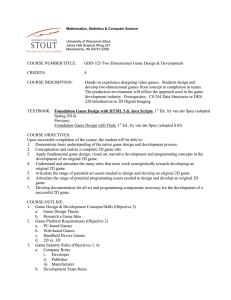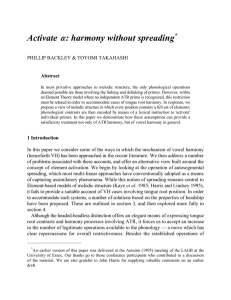Analytic reviews of performances: Some points of inquiry
advertisement
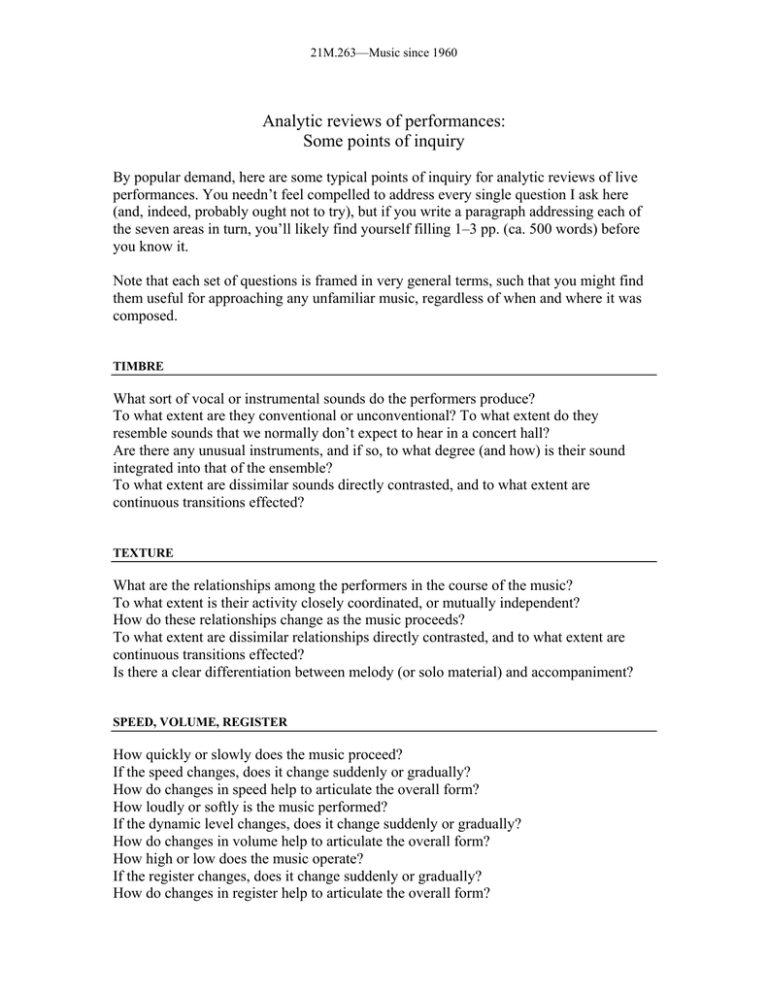
21M.263—Music since 1960 Analytic reviews of performances: Some points of inquiry By popular demand, here are some typical points of inquiry for analytic reviews of live performances. You needn’t feel compelled to address every single question I ask here (and, indeed, probably ought not to try), but if you write a paragraph addressing each of the seven areas in turn, you’ll likely find yourself filling 1–3 pp. (ca. 500 words) before you know it. Note that each set of questions is framed in very general terms, such that you might find them useful for approaching any unfamiliar music, regardless of when and where it was composed. TIMBRE What sort of vocal or instrumental sounds do the performers produce? To what extent are they conventional or unconventional? To what extent do they resemble sounds that we normally don’t expect to hear in a concert hall? Are there any unusual instruments, and if so, to what degree (and how) is their sound integrated into that of the ensemble? To what extent are dissimilar sounds directly contrasted, and to what extent are continuous transitions effected? TEXTURE What are the relationships among the performers in the course of the music? To what extent is their activity closely coordinated, or mutually independent? How do these relationships change as the music proceeds? To what extent are dissimilar relationships directly contrasted, and to what extent are continuous transitions effected? Is there a clear differentiation between melody (or solo material) and accompaniment? SPEED, VOLUME, REGISTER How quickly or slowly does the music proceed? If the speed changes, does it change suddenly or gradually? How do changes in speed help to articulate the overall form? How loudly or softly is the music performed? If the dynamic level changes, does it change suddenly or gradually? How do changes in volume help to articulate the overall form? How high or low does the music operate? If the register changes, does it change suddenly or gradually? How do changes in register help to articulate the overall form? 21M.263—Music since 1960 FORM What are the relationships among musical materials across the course of the entire piece? Do the musical materials change abruptly, or evolve gradually? Do the changes seem to progress toward a clear point of arrival? Are there any clear thematic or motivic gestures that recur? If so, to what extent are the recurrences altered or transformed? Do they recur frequently, or only at the very end? How is the form articulated? How do you know when one section ends and another begins? RHYTHM Is there a clearly identifiable pulse? or none? or several? Are there clearly identifiable rhythmic patterns, and if so, how are they transformed upon recurrence? What are the relationships among phrase lengths? To what extent does the rhythmic activity seem static (e.g., running in place), and to what extent does it seem to propel the music forward? How do changes in rhythmic activity contribute to a sense of tension or relaxation? How do contrasts in rhythm help to articulate the overall form? MELODY What is the proportion of small melodic intervals (steps) to large ones (leaps)? If there are leaps, how many articulate consonant intervals (thirds, perfect fourths, perfect fifths, sixths)? How many articulate dissonances (tritones, sevenths, ninths, etc.)? To what extent do melodic lines conform to triadic tonality, or deviate from it? To what degree are the pitches of the melody stable? To what degree are they varied or inflected? To what extent do melodic lines sound static, or undecorated? To what extent do melodic lines sound fluid, or ornamented? To what extent do melodic lines seem to arrive at clearly defined goals? HARMONY To what extent does the harmony sound consonant, or dissonant? What are the most simple or stable harmonies in the piece? What are the most complex or dissonant? To what extent does the succession of harmonies conform to triadic tonality, or not? How do changes in harmony contribute to a sense of tension or relaxation? How do changes in harmony help to articulate the overall form? To what extent do harmonic successions seem to arrive at clearly defined goals?
